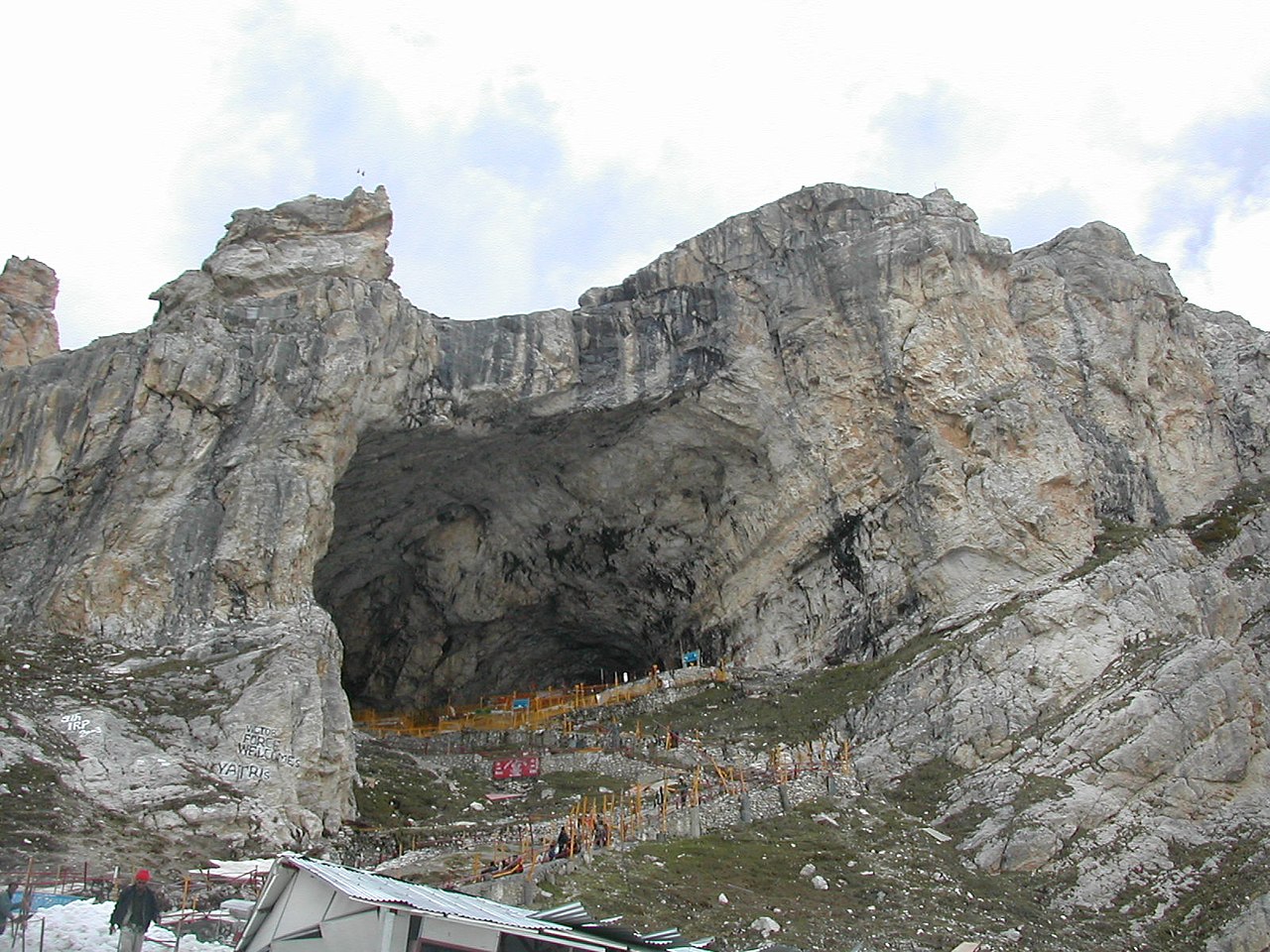Amarnath Temple Cave is located at an altitude of 3888 meters (12760 feet) in the Himalayan mountain range known as the Chandanwari Hills. The shrine receives more than 4 lakh pilgrims in a 45-day visiting period during the month of Shravan and the Shravani Mela.
For Amarnath Yatra, the cave is surrounded by snowy peaks on all sides. The total height of the cave is 130 feet. A snowy stalagmite forms the shape of the Shiva Linga, which is worshipped with great reverence. Besides the main Linga, three other formations representing smaller Lingas are worshiped: Lord Ganesha, Goddess Parvati, and Bhairava. The ideal month is July-September.
Things To Know Before you visit Amarnath
Many people often tend to avoid visiting this season since there are chances for rain to hamper the sightseeing. But it is always better to check the weather forecast before going out. This way, you will not miss the best time to enjoy with your loved ones hereafter; the Yatra is one.
Tips: No doubt that monsoon is not as chilly as you can experience in the winter season, but this is a fact that it will still be cold. That is why; you must have your rain gear at the same time, jackets and boots for winter too.
History of Amarnath Temple
The Amarnath Temple Cave has a rich history dating back to ancient times. It is mentioned in texts like the Bringesh Samhita and the Nilamata Purana, showcasing its deep-rooted significance.
The Amarnath Mahatmaya and Pilgrimage Details
The Amarnath Mahatmaya provides extensive details about the pilgrimage to the Amarnath shrine. It highlights the various holy sites along the route and their significance. This sacred text is considered a comprehensive source on the importance of Amarnath.
The Legend of Lord Shiva and Goddess Parvati
The cave’s legend revolves around Lord Shiva choosing this secluded spot to enlighten Goddess Parvati about immortality. The story of why Lord Shiva wore the Mund Mala, a necklace of skulls, and the quest for immortality is captivating.
Secrecy and Creation of the Amarnath Cave
To ensure utmost secrecy, Lord Shiva took elaborate steps, including isolating the location and eliminating all living beings from the vicinity. This was to ensure that the tale of immortality remained concealed.
The Immortal Pigeons
Unbeknownst to Lord Shiva and Goddess Parvati, a pair of pigeons hatched from an egg hidden beneath Lord Shiva’s deerskin. They became immortal by listening to the tale of immortality, and pilgrims believe they can still be seen around the cave.
Sage Kashyapa and the Drainage of Kashmir
An ancient epic suggests that the valley of Kashmir was once submerged underwater. Sage Kashyapa played a significant role in draining the water from the valley, ultimately leading to the discovery of the holy cave.
The Shepherd Buta Malik’s Discovery
A more recent legend credits the discovery of the cave to a shepherd named Buta Malik, who stumbled upon it while returning from a meeting with a Saint. This discovery marked the beginning of the cave’s popularity as a pilgrimage site.
The Sage Bringesh and the Chhari Mubarak
Sage Bringesh and his disciples embarked on a pilgrimage to the Amarnath cave but faced challenges from demons along the way. Sage Bringesh’s penance to Lord Shiva resulted in him receiving the Chhari Mubarak, a symbol of divine protection.
These diverse legends and historical mentions contribute to the profound significance of the Amarnath Temple Cave, attracting pilgrims from far and wide.
Also read: Discover the Mesmerizing Vaidyanath Temple in Jharkhand
Timings for Amarnath Temple
The Amarnath Temple cave remains open to the public from July to August (Vyas Purnima to Shravan Purnima). The official darshan timings are from 6 am-6 pm.
Devotees must reach Panchkarni before 3:00 PM to take a pony ride/ trek. If they reach after 3:00 PM, they are not allowed to go to the temple on that day. Instead, they have to stay overnight in a camp in Panchtarni and then go for a temple darshan in the morning.
All yatris (visitors) have to register at the Jammu and Kashmir Tourist Offices in major cities of India like Delhi, Mumbai, Chennai, Kolkata, Hyderabad, Ahmedabad, Jammu, and Srinagar.
Eating near Amarnath Temple
Government-aided and NGO-aided tents are set up strategically throughout the trek route. They offer simple vegetarian food to the devotees. It is strictly advised to carry snacks like chocolates, toffees, biscuits, dry fruits, and medicines for altitude sickness.
Final Note
The only reason why Amarnath Yatra begins on a particular date and finishes in September is because of the season. So if you want to plan for Amarnath Yatra, then you might plan between July to August when the time and seasons both are pleasant. Besides, you can enjoy the lush greenery and, on the other side snow-capped mountains together in one sight.
Image Credits: Wikipedia





Thank you, I have just been searching for information about this topic for ages and yours is the best I have found out till now. But, what concerning the bottom line? Are you positive in regards to the supply?